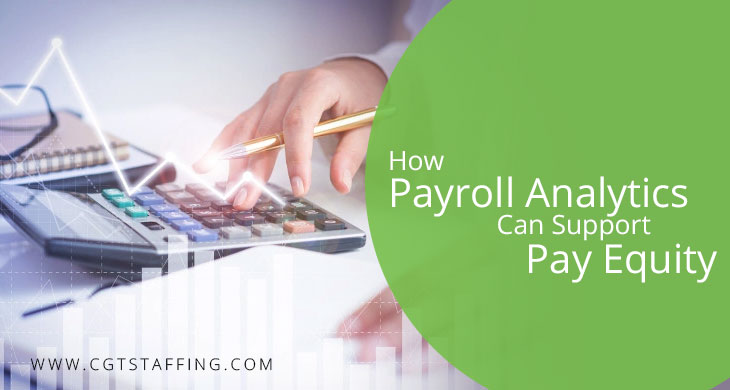The use of data in business decisions is fairly standard practice in our world. Business data is a very valuable asset with a wide range of uses. The right data can help businesses locate and fix inefficiencies in the workplace. Business managers can identify bottlenecks in processes that impede productivity. Even HR functions use data to track and manage their talent acquisition strategies. Accordingly, it should come as no surprise that data is now in use in payroll and compensation as well. Payroll analytics may prove the next big thing in the fight for equitable pay in the 21st Century.
Table of Contents
How Payroll Analytics Can Help Businesses Combat Inequity in Pay
Payroll analytics can help businesses manage compensation and benefits with a lot more precision than ever before. For businesses that are meticulous about their employer brand and market reputation, establishing measures for equitable pay has been a key goal for several years now.
However, recent advances in digital technology and data science may offer businesses new approaches towards this goal. Leveraging payroll analytics seems to be one of these approaches. Read on to find out more about payroll analytics and how to use them to close unfair compensation and benefits gaps.
What are Payroll and Benefits Analytics?
All business processes generate information or data. The extent and use of this data can depend on how and why the data was gathered. Payroll data analytics follows in the vein of HR analytics, but it has a far more precise use – i.e., driving growth while keeping payroll expenses at optimal levels. In other words, payroll analysts use this data to determine whether business spending on the workforce is sustainable and is appropriate to business growth.
How Do Businesses Use these Analytics?
Payroll data can have more diverse roles as well. For example, it can help contribute to some very valuable parts of a business value proposition to candidates. This could include data to help raise the average pay at the business much higher than other comparable businesses.
It could help identify valuable non-financial benefits to boost hiring and retention success. These are all critical points in the context of a candidate hiring, and they can make it easier for strategic partners, such as a staffing agency, to source an even higher caliber of talent.
In most business scenarios, pay and benefits are primarily based on employee performance. High performers are exactly the kind of employees with which every business wants to populate its workforce. Talented workers help businesses move closer to their goals. On the other hand, poor performers or habitual slackers impede progress and deplete morale.
Poor performers can also prove resentful of workers who perform better. In extreme cases, they could even make it difficult for them to continue working through antics like workplace bullying. In such scenarios, payroll analytics can help businesses reward workers more fairly and help to retain the best-performing workers.
How Can Compensation Analytics Fight Pay Inequity?
Compensation and payroll data, when used correctly, have a diverse range of uses. Helping businesses progress past pay inequity is one seminal use. Of course, before you can figure out how to may compensation equitable, you first need to find out where you stand. This is where a pay equity audit can prove very helpful.
Like any audit, this workplace investigation process is a transparent and reliable analysis of various aspects of a business – in this case, pay equity. The audit should help you identify any areas that need work in terms of making compensation fair and unbiased. Once identified, payroll analytics can help in three key areas, namely:
Data-Driven Benchmarking
Benchmarking is crucial in a job market where candidates play a much more powerful role than ever before. Using compensation data can help businesses benchmark salaries more accurately. This can help them identify the necessary compensation and benefits to offer. The right offer can encourage candidates to choose you over other employers. In parallel, businesses gain valuable insights into what counts as equitable pay for a candidate in comparison to their peers.
Identifying Flaws in Fair Pay Strategies
Compensation data and analytics can also help identify weaknesses in existing compensation strategies. This often involves an overlap between data on payroll, attrition, and job satisfaction issues. While there can be other complexities, generally a drop in job satisfaction levels can lead to higher employee turnover. Factoring in payroll data can help businesses determine whether their compensation model is contributing to the drop in morale and satisfaction.
Measure the Success of Compensation Plans
Successful businesses thrive thanks to recruiting and retaining the right people at the right time. Therefore, searching for correlations between your payroll data and your business goals may prove worthwhile. They can help you measure the success of your compensation models against that of your business goals. And in many ways, they can help you identify the compensation models that are most equitable and successful.
Any employment relationship is based on mutual benefits. Benefits need to work both ways, however. An equitable model will always attract some of the best talent around. Conversely, pay inequity will drive them away. This information could even eventually help you revamp your total compensation model with a more equitable approach.
